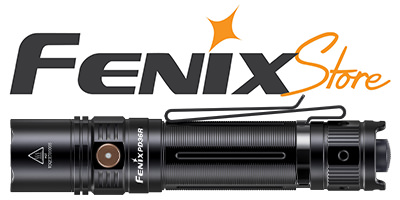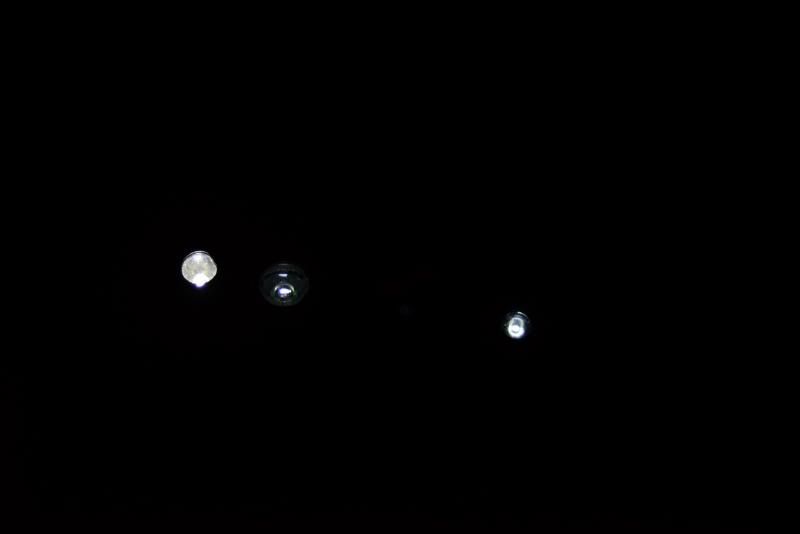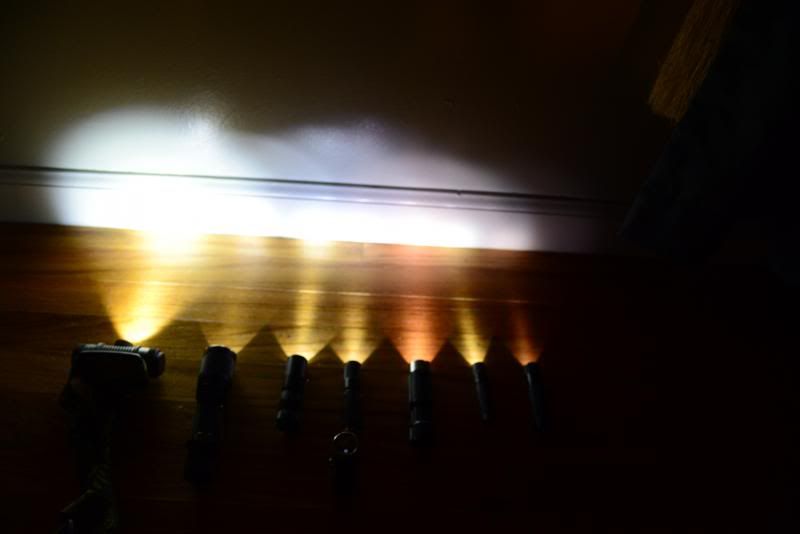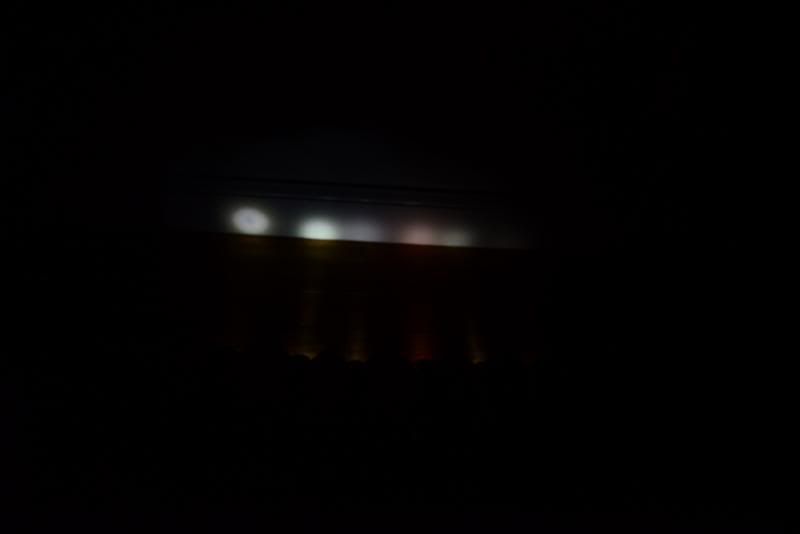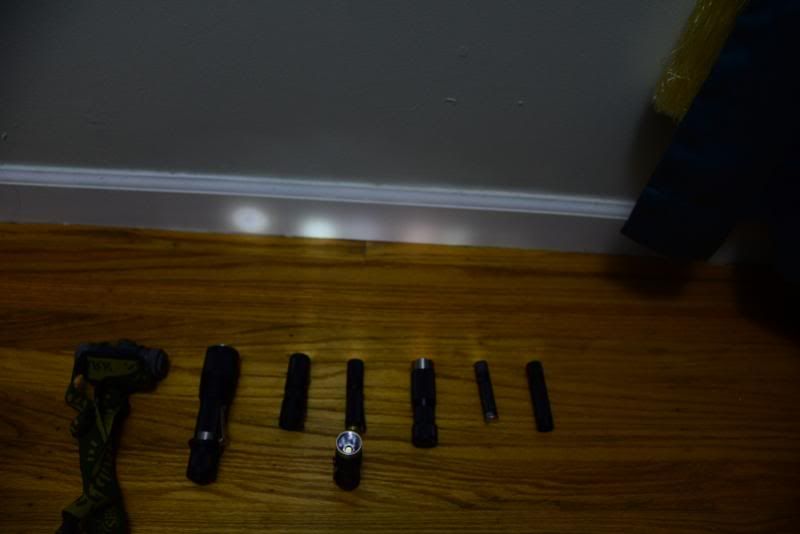Great comparison shot... Could you possibly underexpose it (and/or flip an overhead light on) so there's some detail in the hotspots of the all the "brighter" lights (yeah you'll probably lose L2B&C). One shot overexposed for spill and one underexposed for hotspot makes a huge difference in being able to discern the brightness differences.
I did take a half-second exposure at the same time. Here it is:

The dimmest moonlight mode of the SC52 is lost in the above exposure, but it better shows the brightness differences in the brighter moonlight modes of the other lights.
Also agree that the SC52 "appears" about half as bright as the Quarks, but due the logarithmic perception thing, that means ~ 1/3 to 1/4 the lumen output, which is about what I measure it to be. If you are using a DSLR, you can use it to meter the lumen outputs as well - just calibrate to, and meter for, shutter speed.
I'm not so sure the logarithmic perception applies well at very low brightness levels. By that point, our eyes are no longer gaining/losing night adaptation, and our pupils aren't dilating. So the physiological reasons for seeing light in a logarithmic way no longer applies. My guess is that that SC52 Low2A mode is a little less than 0.1 lumens. The Quark XPG2 is about 0.2 lumens, and the Quark XML2 is about 0.3 lumens.
